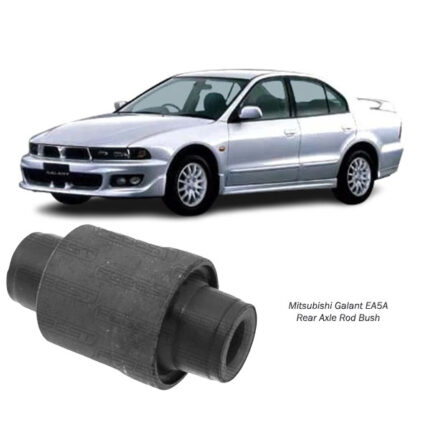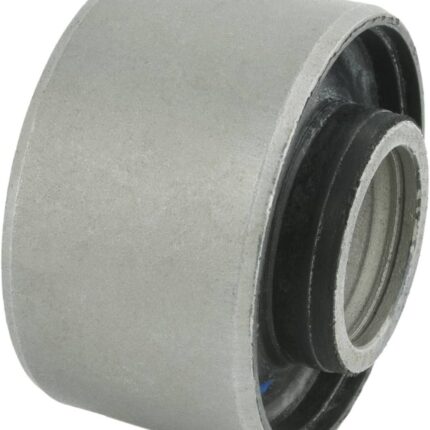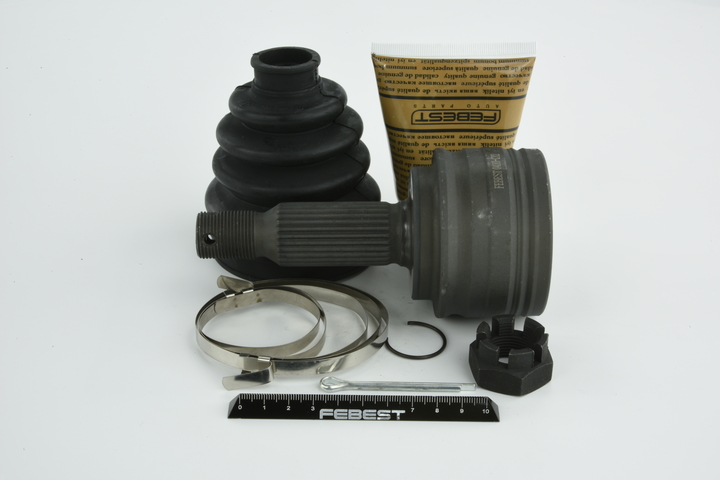-5%
Get Mitsubishi Lancer CV Joint Assy
The CV joint assembly, or Constant Velocity joint assembly, is a crucial component in front-wheel drive, all-wheel drive, and some rear-wheel drive vehicles. CV joints allow the drive shaft to transmit power to the wheels while accommodating the up-and-down movement of the suspension and the steering motion. Here’s an in-depth look at the CV joint assembly, its functions, signs of wear or failure, and maintenance considerations:
Functions of CV Joint Assembly
- Transmission of Power
- Primary Function: Transmit power from the transmission to the drive wheels.
- Details: CV joints ensure that the rotational force from the engine is smoothly transferred to the wheels, even while the wheels are turning or the suspension is moving.
- Accommodating Suspension and Steering Movements
- Primary Function: Allow for the movement of the suspension and the steering mechanism.
- Details: CV joints can flex in multiple directions, enabling the drive shafts to move with the suspension and turn with the steering, ensuring continuous power delivery regardless of wheel position.
- Maintaining Constant Velocity
- Primary Function: Provide a constant rotational speed to the wheels.
- Details: Unlike traditional universal joints, CV joints maintain a constant velocity, reducing vibration and providing smoother power delivery.
Types of CV Joints
- Ball-Type (Rzeppa Joint)
- Commonly used in front-wheel-drive vehicles at the outer end of the driveshafts.
- Consists of a spherical inner and outer race with ball bearings in between.
- Tripod Joint
- Typically used at the inner end of the driveshaft.
- Comprises a three-pointed yoke that slides into a housing with needle bearings.
Signs of Worn or Failing CV Joints
-
1. Clicking or Popping Noises
- Description: A noticeable clicking or popping sound, especially when turning.
- Details: This sound is most commonly heard during sharp turns or when accelerating through a turn. It indicates that the CV joint’s internal components (usually the ball bearings) are worn and moving excessively in their raceways. This symptom is often one of the first and most recognizable signs of CV joint failure.
2. Grease Leakage
- Description: Grease splattered around the inside of the wheel or on the undercarriage.
- Details: CV joints are protected by rubber boots filled with grease. If these boots crack or tear, grease can leak out. This not only reduces the lubrication of the joint, leading to wear but also allows dirt and moisture to enter, accelerating the degradation of the joint.
3. Vibration While Driving
- Description: Noticeable vibration or shuddering felt through the steering wheel or vehicle floor.
- Details: An imbalanced or worn CV joint can cause the driveshaft to vibrate. This vibration typically increases with speed and can affect the handling and comfort of the vehicle.
4. Banging or Clunking Noises
- Description: Banging, clunking, or knocking sounds, particularly when shifting from drive to reverse.
- Details: These noises can indicate that the CV joint has deteriorated to the point where it has significant play. The joint can no longer maintain a smooth connection, resulting in these sounds as the driveshaft engages and disengages.
5. Reduced Driving Performance
- Description: Poor acceleration or a feeling of reduced power delivery to the wheels.
- Details: A failing CV joint can hinder the effective transfer of power from the transmission to the wheels. This can manifest as sluggish acceleration or a general sense that the vehicle is not performing as it should.
6. Visible Damage to CV Boots
- Description: Cracks, tears, or holes in the rubber CV boots.
- Details: During routine inspections or maintenance, check the condition of the CV boots. Any visible damage to these boots means that the joint is at risk of contamination and loss of lubrication, leading to premature wear.
7. Unusual Handling Characteristics
- Description: Changes in the handling of the vehicle, such as pulling to one side or increased body roll during turns.
- Details: Damaged CV joints can affect the alignment and stability of the vehicle, leading to unusual handling behaviors that can compromise safety and drivability.
Maintenance and Replacement
Regular Inspection
- Boot Condition: Regularly inspect the CV boots for signs of damage or leaks.
- Listening for Noises: Be attentive to unusual sounds while driving, particularly when turning or accelerating.
Prompt Replacement
- Damaged Boots: Replace any damaged CV boots immediately to prevent further damage to the joint.
- Worn Joints: If a CV joint shows signs of wear or failure, replace it to maintain vehicle safety and performance.
Use Quality Parts
- OEM or Reputable Aftermarket Parts: Ensure replacement parts match your vehicle’s specifications for optimal durability and performance.
Professional Installation
- Expert Assistance: Consider having a qualified mechanic perform the replacement, as it may require specialized tools and expertise to ensure correct installation.
Follow us on Facebook for more parts.



